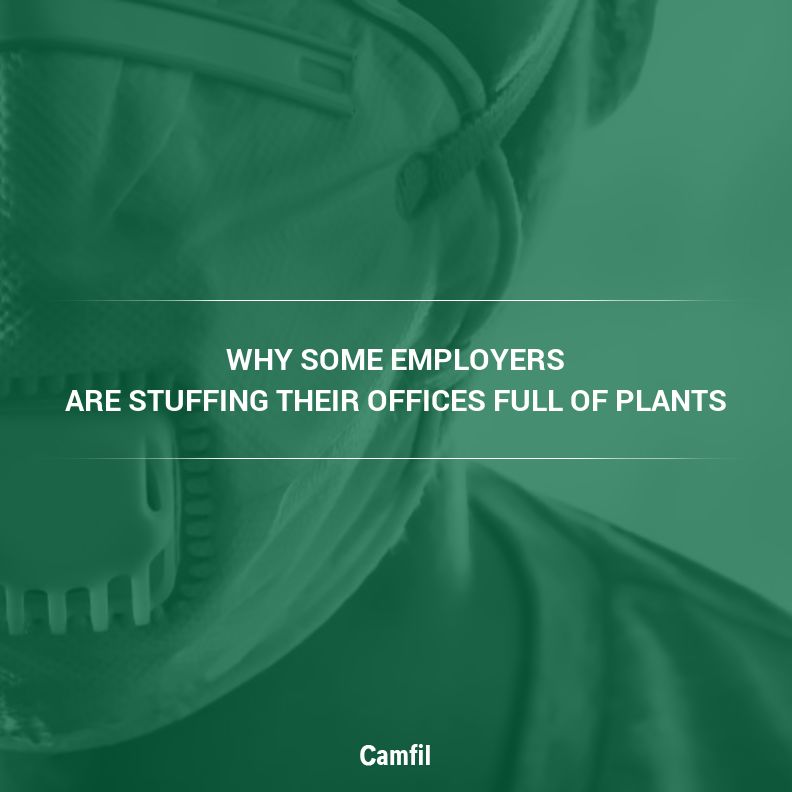Utah has passed air quality guidelines to fight VOCs, easing the burden on commercial air filtration systems when improving indoor air quality.
Many small to medium enterprises in Utah are taking steps to reduce volatile organic compounds (VOCs) generated during the production of their products which eases the burden on their commercial air filtration systems. Measures include switching to water-based paints for auto shops and cabinet makers, using electric-powered lawn tools for gardening companies, and adding exhaust controls for coffee roasters.

Why Some Employers Are Stuffing their Offices Full of Plants
Utah’s state legislation on air quality has been instrumental in requiring local businesses to comply with air quality guidelines. Rules include the use of water-based paints by auto repair shops, reducing VOC content in consumer products (such as hairspray, insecticides, and bathroom cleaners), and limiting the burning of solid fuels like wood to certain days of the week. These solvent measures are expected to reduce VOC emissions by 10,000 pounds every single day, according to the Department of Air Quality.
What Are VOCs and How Do They Affect Indoor Air Quality (IAQ)?
VOCs (volatile organic compounds) can be broadly defined as substances that evaporate or otherwise disperse (volatilize) molecules into the air. We typically detect them by smell as one effect VOCs have on indoor air quality is odor.
Many of the everyday products found at home, in retail shops or in the office are sources of VOCs. This is especially true for many businesses. Take automotive shops, for example, which use all kinds of paints, solvents, and other chemicals.
“Paint spraying facilities require a constant supply of fresh air, not just for production quality, but for safety reasons. The airflow design for paint booths seems straightforward and relatively simple, but that’s simply not the case,” explains Chad Peay, Salt Lake City Branch Manager at Camfil USA. “
“The sheer scale of a production line presents a challenge in maintaining airflow uniformity through the filters and avoiding a wind-tunnel effect from one paint booth to the next. Airflow can be deflected and disrupted – negatively impacting the painting process and the quality of the final product.”
Solvent VOCs Impact More than Just Indoor Air Quality
The benefits from Utah’s new air quality rules on the production of VOCs will take time to make an impact so the problem of solvents presents a current air pollution challenge Why? Because VOCs are also a primary component of ground-level ozone, which in turn, contributes to the formation of smog — a chronic problem in the Wasatch Front.
The counties of Salt Lake and Davis, as well as parts of Weber, Tooele and Box Elder, produce 35 tons of VOCs a day, according to DEQ data. Solvents account for roughly half of all air pollution emissions from area sources, which include small businesses, light industrial facilities, and homes.
If the region fails to meet the EPA’s standards for ground-level ozone, the DEQ will have to formulate a plan to reduce ozone precursor pollutants by 15 percent over a six-year period.
Industrial Air Filtration Systems Offer a Solution to VOC Indoor Pollution
Apart from their effects on ambient (outdoor) air quality, VOCs can also dramatically affect air quality in offices, stores, clinics, and other establishments. Unfortunately, it is next to impossible to completely eliminate VOCs inside indoor commercial environments. As mentioned earlier, sources of VOCs are too commonplace. These gases are constantly being generated by everyday items, from furniture, dry cleaning, and even cosmetic products. One way to lessen the buildup of VOCs is to open the windows. However, for workplaces and buildings in polluted areas, opening the windows only replaces VOCs with outdoor air pollution. The more practical solution is to install industrial air filtration systems.
Is There a Single Solution to Remove VOCs?
On their own, high-efficiency particulate filters (those with ratings ranging from MERV 13/13A up to HEPA filters) cannot completely remove volatile organic compounds from the air as these filters can only target particulate matter (PM). But when paired with molecular filtration solutions, such as those with activated carbon, these air purification systems can be effective at removing both particles and VOCs.
Activated carbon is a carbonaceous material that goes through a process that essentially creates a multitude of pores and caverns across its surface. This greatly increases the surface area to the point where if a small nugget of this material were spread out flat, it may be able to cover two full-size tennis courts. This massive surface area of pores and caverns allows the carbon material to adsorb the molecules we refer to as VOCs.
Going Beyond Particulate and Molecular Air Filter
Aside from using a combination of high-efficiency particulate filters and molecular filters, there are other ways to reduce VOC exposure in commercial buildings, including source control (i.e. removing products with high levels of VOCs from the house or workplace), ventilation, and using low-VOC products (most common in paints).
Still, any protection is better than none at all. Be sure to work with a trusted air filter manufacturer specializing in both particulate and molecular air quality solutions for commercial buildings and industrial facilities. Get in touch with the air quality experts of Camfil USA to talk about how our commercial air filtration systems can help your needs.
The post Fight Against VOCs Involves Source Reduction and Air Filtration appeared first on Air Filters for Clean Air.

